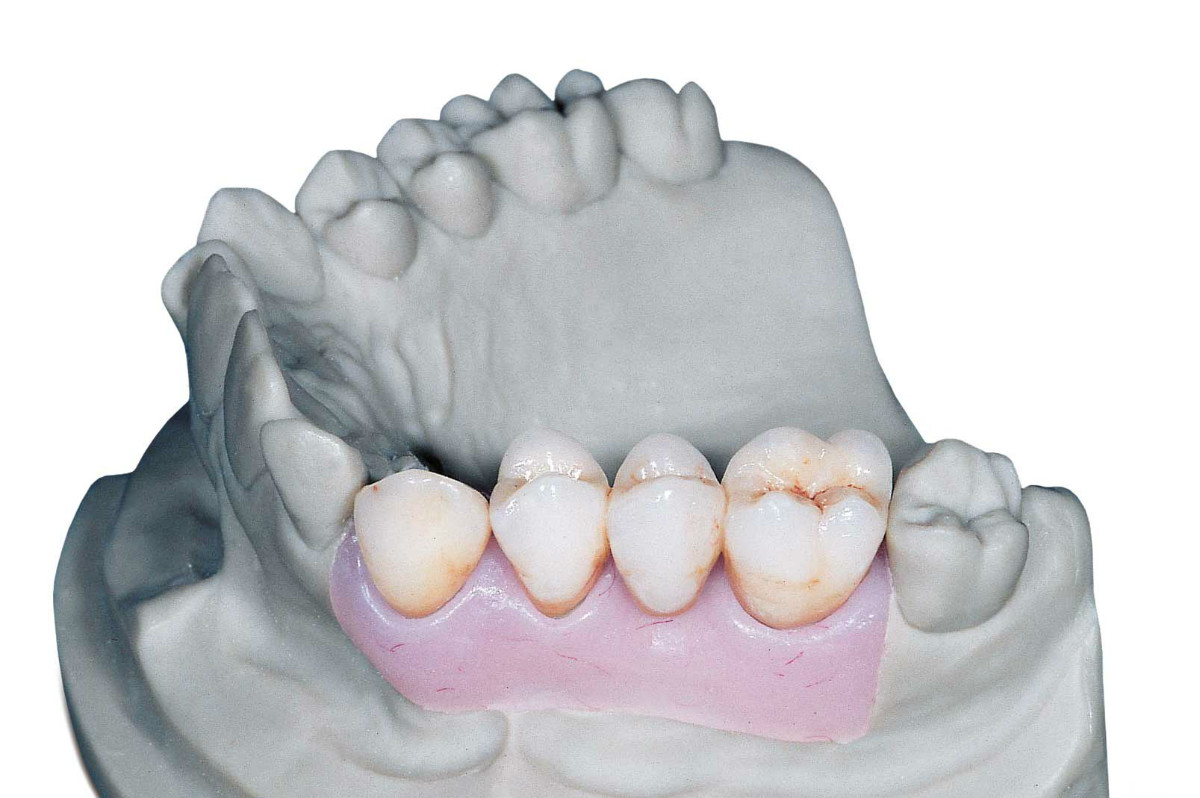
Among the various solutions for gingival reproduction, Zhermack decided to focus on addition silicones, especially owing to the long working period they provide for the dental professional.
This article provides a detailed analysis of the procedure for the correct use of Gingifast Elastic silicone in an emergency profile duplication case.
A brief introduction on implants
Ever since it was invented, implantology has become more and more predictable, so much so that it is considered today to be a reliable and highly appreciated rehabilitation technique by dentists and patients alike.
From an aesthetic viewpoint, implantology manages to achieve ever better results thanks to the improvements made during the intervention planning phase, in the management of peri-implant soft tissues and the materials supplied by manufacturers. Some of the important factors to achieve good aesthetics in implant cases, especially in the front sectors, are the assessment of the biotype and portion of keratinised gum present.
In aesthetic sector rehabilitations, it may prove complex to predict the maintaining of a natural emergency profile capable of camouflaging with the oral cavity on the whole.
Dentistry, which these days focuses increasingly on imitation, needs to encourage the use of tools that allow the conditioning of peri-implant soft tissues and the achievement of an ideal configuration through the use of a temporary tooth.
To develop a natural emergency profile, it is vital to work immediately after the implant reopening. The purpose of the temporary tooth is to shape the gingival profile through a moderate and constant pressure on the peri-implant tissues.
Use of Gingifast Elastic addition silicone
In the duplication of the emergency profile and transmucosal route, the use of Gingifast Elastic, a silicone utilised as a gingival substitute, makes it possible to minimise the stress from overheating due to polymerisation and thus reduce the need for corrective surgeries.
The best duplication procedure using Gingifast Elastic entails the following:
- clean and accurately dry of the impression
- mark the area that needs to be occupied by the reproduction with Gingifast Elastic on the impression, if necessary boxing the area concerned with wax
- apply Separator evenly across the entire surface concerned (it can be applied to condensation and addition silicones)
- wait for the Separator to dry
- insert the material around the coping, avoiding the generation of air bubbles
- wait at least 10 minutes for it to set completely
- prepare the model as usual
- separate the product from the impression
- proceed with any finishing, which is easier thanks to the hardness and appropriate texture that the resin achieves once polymerised
The gingival reproduction used in implant prostheses simulates the conditioning of gum tissue to determine the shape of the cervical contours and the emergency profile of the prosthesis. The balanced hardness of the material is ideal also to facilitate the burring of the edges during the model finishing process.
Would you like more information on Zhermack gingival solutions?
Go to catalog
 Zhermack SpA has been one of the most important producers and international distributors of alginates, gypsums and silicone compounds for the dental sector for over 40 years. It has also developed solutions for the industrial and wellbeing sectors.
Zhermack SpA - Via Bovazecchino, 100 - 45021 Badia Polesine (RO), Italy.
Zhermack SpA has been one of the most important producers and international distributors of alginates, gypsums and silicone compounds for the dental sector for over 40 years. It has also developed solutions for the industrial and wellbeing sectors.
Zhermack SpA - Via Bovazecchino, 100 - 45021 Badia Polesine (RO), Italy.


